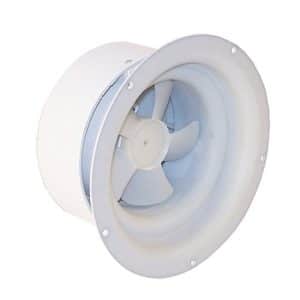Many people don’t consider how important ventilation is on campers; not only to cool or dry the inside of the camper but also to safely remove carbon dioxide from cooking or idling. A ventilation fan is a great, cheap, low-cost alternative to air conditioning. There are many different kinds of vents that you probably have noticed around your camper already.
Types of Vents
Passive Vents without fans
Most vents are passive, which just open to release built up, warm air. Many low-end trailers, 5th wheels, and motor-homes may just have a hand crank next to the vents only allowing passive airflow. Opening a roof vent is a quick way to cool down any camper. Since warm air rises all of the hot air gets trapped near the ceiling; having a vent to open on the ceiling allows the warm air to escape. Also, opening vents near the floor bring in cool air from the outside.
Allowing moisture to accumulate can lead to foggy windows, humid air, and eventually mold. Humans’ core temperature is usually warmer than the air around them and we expel warm air. Campers in cooler climates may notice a build-up of condensation; an easy fix is to leave your passive vents or windows slightly cracked.
Some people might upgrade their stock vents to ones with fans, upgrade just to get more airflow, or upgrade to bi-directional fans (the ability to blow out and suck in air). While there are many camper ventilation fan locations there are many you may not know about, for example, ventilation for your refrigerator or battery.
Service Vents
These vents normally tie into your water system, including the gray and black water reserve tanks. The water tank vent is usually a small hole in the tank itself. If there is no small hole, the vent to the gray water tank is any drain that the water goes down.
Sewage ventilation can be tricky because you want to vent the pressure from expanding gases but want to make sure there is no smell in or around the campsite. Not venting the gasses can lead to internal pipe damage as well as possible leaking. Most times your stock sewage vent will do its job, but if you want a more efficient and faster sewage drain, I recommend checking out our list.
Battery compartments or battery boxes also have vents. For more information on the battery, vents check out Do I Need A Vent On My Battery Box.
Exhaust Vents
During the winter you most likely turn on the heat to stay warm or take a nice warm shower. Both the furnace and water heater, while sometimes combined, need proper ventilation. Since both of these most likely burn propane or gas, you can’t use the exhaust heat generated from them because of the carbon dioxide.
These mechanisms need to breathe in air to mix with propane to produce the flame to heat the living space or water. Usually, a camper ventilation fan draws in air from outside, it is very important that the air is clean which is why you might have a filter. This is the same reason your car or lawnmower has an air filter; I used to go years before changing the filter. All filters and the vents must be maintained.
I have met RV owners who put in aftermarket fans to blow extra air into the furnace, which I do not recommend. Sure, you may get much more life out of your propane tank, but the risk for fires is increased. My advice is if your camper originally came with an intake furnace ventilation fan then you can add a better one or a more quiet one. If your camper does not have a stock intake furnace fan, do not attempt to add one.
Powered Vents with Fans
Refrigeration vents, often overlooked, are very much needed. If your trailer or RV does not have one, you might be at a higher risk of having a fire. Refrigerators generate heat, and for this reason, it may be a good idea to install a camper ventilation fan or a fan to the current vent. Removing heat from the space the fridge is in will also increase its efficiency.

Since the heat coming off of the refrigerator is just heat and nothing else, you can use it to partially warm the inside of your camper in the winter. For example, my fridge is near my camper’s door built into the wall and I put a vent near the floor on the side closest to the door. I added a small quiet fan so that it blows warm air into my sleeping space.
A Reminder
Always make sure your carbon dioxide detector is working, has batteries, and windows or vents are open when testing or using the furnace or water heater. Make sure to keep camper ventilation fan dust free and clear so they work to their full potential.
